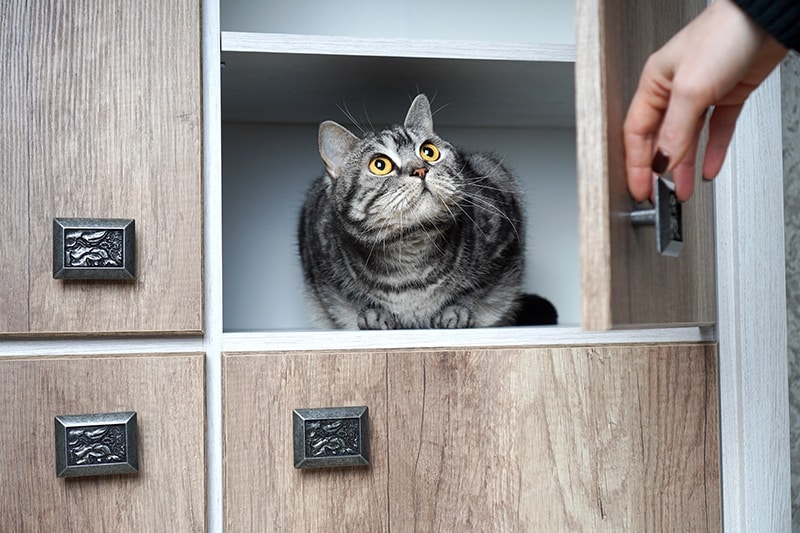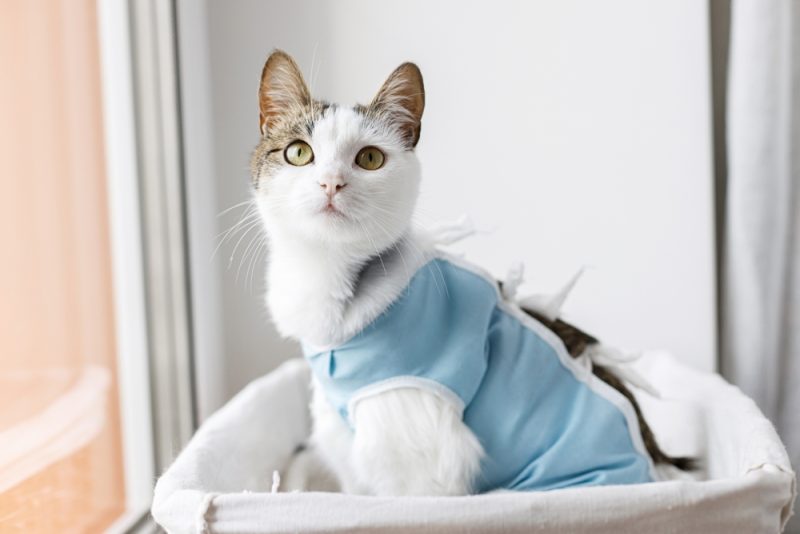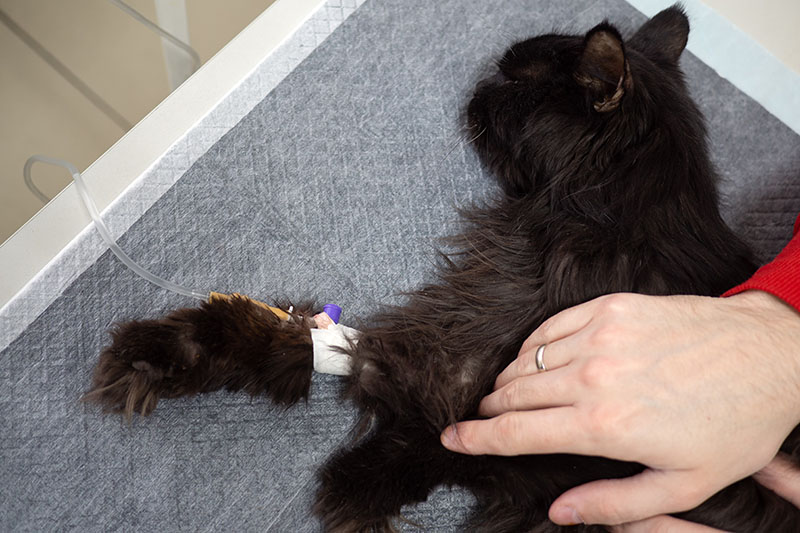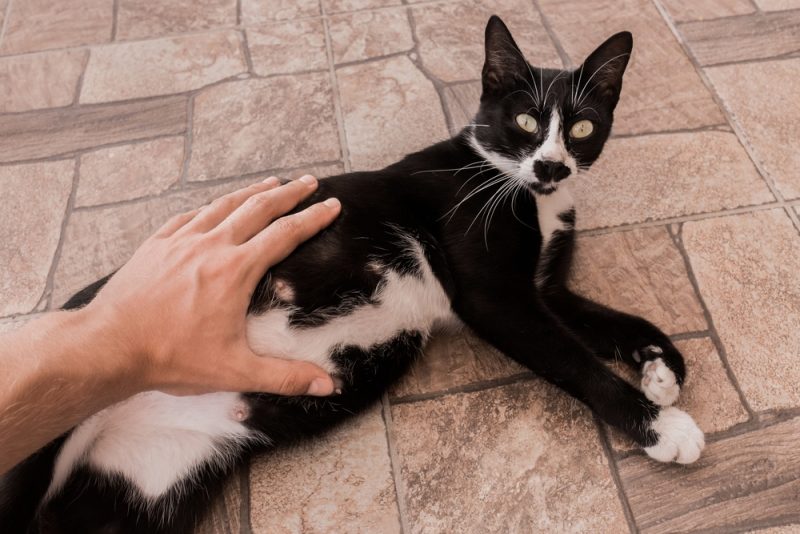Cats are always looking out for their safety and are experts at hiding when they feel afraid or threatened. It’s fairly normal for cats to hide when they first arrive in their new home. The unfamiliar environment can make them feel uneasy and unsafe, and they may spend their first few weeks hiding under furniture or in closets. As they get used to their new surroundings, they’ll usually start to feel safe and start exploring.
You can help a cat get more comfortable during this adjustment period. With some gentle guidance, your cat can start to feel safe and acclimate to their new home.

Before Your Cat Comes Home
There are a few things you can do to create a safe environment before your cat comes home. First, create a designated room for your cat to stay in during their first few days at their new home. This room should be in a quiet part of the home where there’s less foot traffic. Place your cat’s litter box, food and water bowls, and a few toys in this room. Place your cat’s litter tray away from their food and water bowls as cats like to keep these things separate.
Your new cat will also appreciate having a couple of hiding spaces, like beds and boxes, in the room. Using bedding that your cat has arrived with is a good idea as it has a familiar scent and will be a comfort to your cat. Cats like to be up high, especially if they are worried, so placing a hiding space somewhere up high, such as on top of a chest of drawers, will help your cat feel more secure.
The 5 Tricks for Getting a Scared Cat Out of Hiding
1. Give the Cat Space
When your cat first arrives, place their carrier in the designated room. Open their carrier door and allow them to step out in their own time. If your cat is hesitant to come out, you can sit a little distance away from the carrier. Sometimes, it’s helpful to leave the room and give your cat space to venture out of their carrier when they’re by themselves.
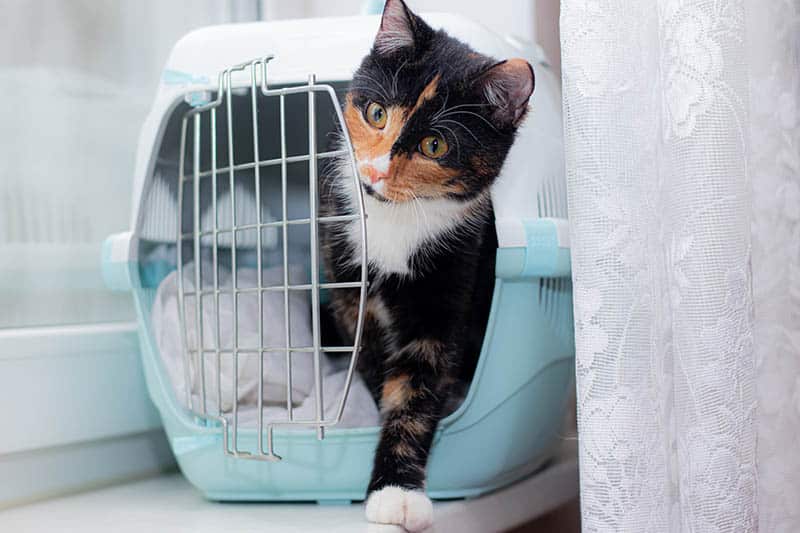
2. Speak to the Cat With a Calm Tone
It’s important to be mindful of your tone of voice and body language when your cat first comes home. Keep your voice calm and gentle so that your cat doesn’t feel startled or anxious. If you have young children in the home, remind them to be mindful of the volume of their voices, as excited yells and laughter can sound scary to a cat.
Keep your movements slow and deliberate while around your cat. Sudden movements–such as jumping up from your chair or running down the hallway–can scare them and cause them to go into hiding.
3. Use Food and Treats
One of the best ways to earn your cat’s trust is to feed them. Rather than letting your cat free feed, try to set up a meal schedule. Feeding your cat at the same time of day can help establish a routine for your cat, which can make them feel more at ease and comfortable.
Some especially nervous cats will only come out of their hiding spot to eat, drink, and use the litter box in the dead of night. So let them do this, and after a few weeks, they will undoubtedly become more confident. Forcing the issue won’t help. If your cat is hesitant to eat while you’re in the room, try placing their food bowl near their carrier and leaving the room to let your cat eat on their own. After a few days of doing this, you can try staying in the room and at a safe distance away from your cat’s food bowl so that your cat can get used to eating while you’re in the room.
Make sure to feed your cat a few treats throughout the day to get them used to being near you and start building a positive association with you.

4. Hide or Remove Any Triggers
Some cats may get startled when they hear loud noises or see a particular object which will usually cause them to run back to their hiding spot. So, the next time your cat runs into hiding, try to locate what triggered them to hide. It could be loud footsteps, vacuum cleaners, or outside noises that sound strange to cats.
Sometimes, actions or objects can startle cats. Your cat might get scared if they see someone running towards them. They may also be afraid of large household objects, such as boxes, space heaters, and air purifiers.
5. Work in Increments
Patience is key. Do your best to progress at a rate that’s comfortable for your cat. Working in manageable increments will build trust with your cat and help them come out of their shell. Never force your cat to come out of a hiding space. This will only make them feel more unsafe and can be traumatizing for them.
It can take several weeks for a cat to start to feel at ease in their new home. Being patient with them will prove to them that you’re a trustworthy friend and that they can feel comfortable around you.


Conclusion
It’ll take some time and patience to get a scared cat to come out of hiding. You can do some things to help them feel safe, such as creating a peaceful living space, being mindful of your tone of voice, and using food and treats. It’s important not to force a cat out of hiding as this will cause them to feel even more scared. Going at a pace that your cat is comfortable with may feel slow, but it’s the surest and fastest way to help your cat feel safe and increase their trust in you.
Featured Image Credit: Varavin88, Shutterstock
